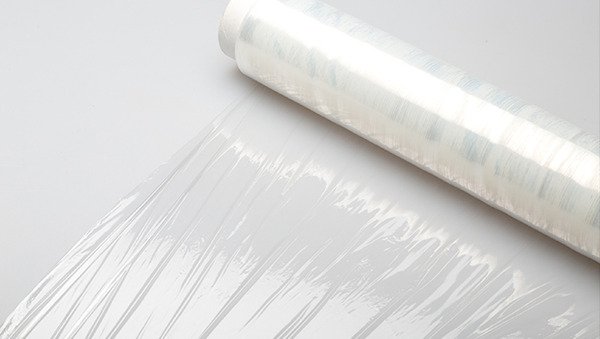
Cling film is a widely used kitchen item, but its disposal raises environmental concerns. While technically recyclable under certain conditions, cling film is rarely accepted in household recycling systems.
Most cling film1 is made from LDPE or PVC2, plastics that require specialized recycling processes. These are not commonly available to the public, making cling film effectively non-recyclable for most households.
Though the plastic can be reprocessed, its physical properties cause significant issues in recycling facilities3. The material’s thin, flexible nature leads to machinery tangling, which can halt operations and require manual removal. Additionally, cling film is often contaminated with food residue, further complicating recycling and increasing the risk of contaminating other materials like paper.
Why Cling Film Is Not Accepted in Household Recycling
Despite being plastic, cling film is rejected from curbside recycling due to both mechanical and contamination issues.
Its flexible structure disrupts sorting machinery, and residual food waste can compromise entire batches of recyclables, especially paper.

Mechanical Interference at Recycling Facilities
Material Recovery Facilities4 (MRFs) use automated equipment to sort recyclables. Cling film poses a threat due to:
- Tangler Risk: Cling film and similar soft plastics wrap around rotating machinery designed for sorting more rigid materials.
- Operational Disruptions: These tangles can force shutdowns, requiring labor-intensive removal and cleaning, which reduces efficiency and increases costs.
Risk of Contamination
Even if the material could be mechanically sorted, cling film's use in food storage introduces contamination risks:
- Food Residue: Oils, sauces, and crumbs are difficult to clean from cling film and can interfere with the recycling of other materials.
- Spoiled Recyclables: Contaminated items, especially paper or cardboard, may be deemed unsuitable for reuse, resulting in more waste.
Comparing Cling Film to Other Plastics
Different plastic types vary in how easily they can be recycled at home. The table below outlines common examples:
| Plastic Item | Plastic Type (Code) | Recyclable at Home? | Why or Why Not? |
|---|---|---|---|
| Water Bottle | PET (1) | Yes | Rigid structure, easily sorted and cleaned. High value. |
| Milk Jug | HDPE (2) | Yes | Rigid, clean, and widely recyclable. |
| Yogurt Cup | PP (5) | Varies by City | Rigid but less valuable; acceptance is expanding. |
| Cling Film | LDPE (4) or PVC (3) | No | Too flexible, causes equipment issues, often contaminated. |
Alternatives to Cling Film
Since recycling is not a viable option for cling film, alternative materials are recommended—either reusable or more easily disposable.
Reusable options include silicone lids, beeswax wraps, and glass containers. For single-use needs, clean aluminum foil and certain compostable films are preferable.
Reusable Alternatives
Reusable products offer the most sustainable and long-term solution.
- Silicone Lids: Flexible, durable, and dishwasher-safe. They create airtight seals on various containers.
- Beeswax Wraps: Made from cotton coated with beeswax, these wraps are moldable, washable, and compostable.
- Glass or Stainless Steel Containers: These are long-lasting and eliminate the need for wrap-style storage altogether.
Better Disposable Choices
When disposables are necessary, more sustainable options include:
- Aluminum Foil: Recyclable if clean and formed into a compact ball to aid sorting.
- Parchment or Butcher Paper: Biodegradable and compostable when not heavily soiled.
Role of Manufacturers in Reducing Plastic Waste
Beyond consumer action, manufacturers play a crucial role in reducing plastic pollution.
Companies like BagMec® contribute by designing machines that can process biodegradable films5, improve recycling compatibility, and enable production of sustainable packaging.

Designing Equipment for Sustainability
BagMec® focuses on producing machines that support eco-friendly packaging solutions:
- Material Flexibility: Machines are compatible with biodegradable materials such as PLA, supported by features like Smart Tension Control to reduce film breakage.
- Reusable Packaging: Specialized machines create durable shopping bags to reduce dependence on single-use plastics.
Supporting Circular Manufacturing
Efforts to close the loop on plastic use include:
- Energy-Efficient Technology: Servo motors in BagMec® machines reduce energy consumption by up to 30%.
- Custom Solutions: Collaboration with clients allows for development of machines tailored to sustainable products, such as fully compostable shopping bags.
Machines That Enable Greener Packaging
BagMec®'s equipment enables production of a wide range of eco-conscious packaging:
| Bag Type | Machine Type | Sustainability Benefit |
|---|---|---|
| Reusable Shopping Bags | Loop Handle Bag Machine | Reduces single-use plastic with durable alternatives. |
| Compostable Food Wraps | Food Package Bag Machine | Handles PLA and other compostable materials. |
| Courier Bags with Recycled Content | Heavy Duty Bag Machine | Designed for thicker films containing recycled content. |
| T-Shirt Bags from Recycled Plastic | T-Shirt Bag Making Machine | Supports recycled HDPE, helping repurpose waste. |
Conclusion
Cling film is technically recyclable but not suited to standard household recycling due to its flexibility and contamination risks. Replacing it with reusable or more recyclable materials is a more sustainable option. Manufacturers like BagMec® play an important role by producing machines that support the development and use of environmentally friendly packaging.
-
Understanding the environmental effects of cling film can help you make informed choices about its use and alternatives. ↩
-
Learn about the specific recycling processes for LDPE and PVC to understand their environmental impact and recycling challenges. ↩
-
Explore how recycling facilities manage various plastics, including the challenges they face with cling film. ↩
-
Gain insights into how Material Recovery Facilities operate and their importance in the recycling process. ↩
-
Learn about biodegradable films, their benefits, and how they can be a sustainable alternative to traditional plastics. ↩






